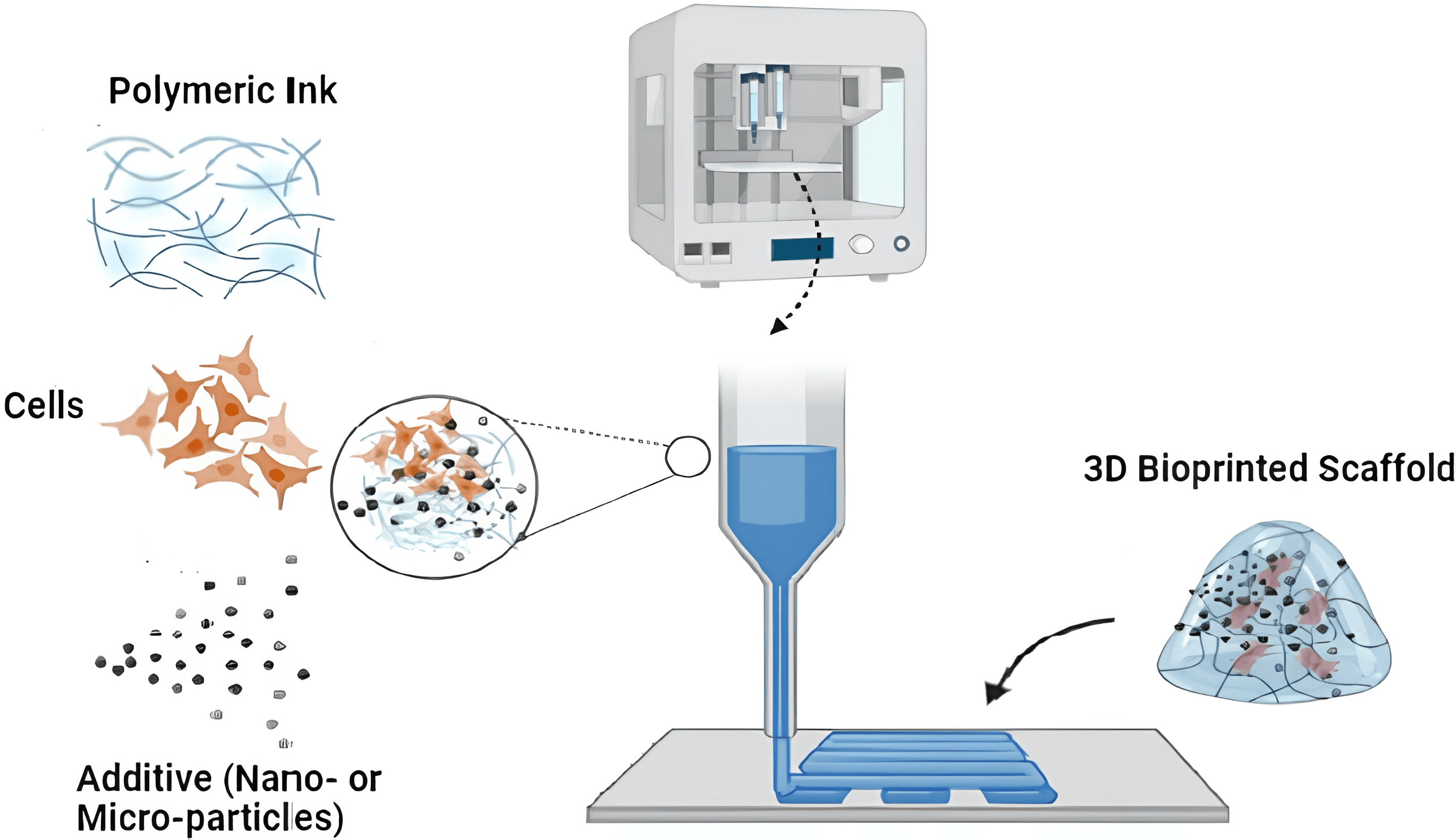Introduction
Bioprinting human organs has emerged as one of the most promising fields in regenerative medicine, aiming to address the global shortage of donor organs and the complications associated with transplants. By using 3D-Printed Organs & Lab-Grown Human Organs to layer cells and biological materials into organ-like structures, researchers and healthcare professionals are envisioning a future where patient-specific organs can be custom-built, significantly improving patient outcomes and reducing the need for long waiting lists.

What is Organ Growth in Labs?
Lab-grown organs, also known as bioengineered or tissue-engineered organs, are developed by cultivating cells on a supportive scaffold in a laboratory setting. This process involves growing specific cells, such as stem cells, to differentiate into the desired tissue type, creating an environment that mimics the human body to encourage these cells to multiply and organize into functional tissues. These lab-grown organs, such as artificial skin, blood vessels, and even basic liver and kidney tissues, are already making strides in research and clinical applications.

Technology in Lab-Grown Organs
The technology behind lab-grown organs relies heavily on stem cell research and tissue engineering. Scientists use a variety of materials, like biodegradable polymers, to create scaffolds that support cellular growth and tissue formation. Additionally, bioreactors provide a controlled environment where factors like temperature, oxygen, and nutrients can be monitored to sustain cell development. Techniques such as decellularization, where cells are removed from an organ leaving only the extracellular matrix, also enable scientists to create organ structures that can be repopulated with the recipient’s cells.

3D-Printed Organs
from a Patient’s Cells
3D-printed organs take lab-grown organs a step further by employing a patient’s own cells in the creation of the organ. This approach not only reduces the risk of rejection but also ensures a highly personalized fit for the recipient. In bioprinting, cells are suspended in bioinks—gel-like materials compatible with human tissues—and printed layer by layer to replicate the structure of human organs.
Technology in
3D Printing Organs
Bioprinting involves highly advanced 3D printing systems equipped with precision nozzles, laser-assisted bioprinters, and specialized bioinks. The technology uses computer-aided design (CAD) software to map the structure of the organ, ensuring every layer of cells is placed accurately. Using a combination of cells, growth factors, and scaffolding materials, bioprinters can reproduce complex tissue patterns necessary for functional organs. Emerging techniques, such as microextrusion, laser-assisted bioprinting, and stereolithography, allow for fine-tuned control over the printed tissue, making bioprinted organs a viable alternative to traditional transplants.



Possibility of
Bioprinting Human Organs
The possibility of bioprinting fully functional human organs is both exciting and challenging. Currently, bioprinting complex organs like the heart, liver, and kidneys is still in experimental phases, though simpler tissues like skin and cartilage are already being produced. However, researchers are optimistic that with advancements in stem cell technology, bioink development, and printing precision, creating fully functional organs for transplantation will become a reality within the next few decades.
Companies Leading
the Bioprinting Frontier
Several companies are at the forefront of bioprinting research:
- Organovo :
Known for pioneering 3D-bioprinted liver tissues used for drug testing.
(https://organovo.com/3d-bioprinted-therapeutic-liver-tissue/)
- CELLINK :
A leader in bioinks and bioprinters, providing technology for research in tissue engineering.
(https://www.cellink.com/#:~:text=3D%20bioprinting%20is%20an%20additive,that%20let%20living%20cells%20multiply.) - Aspect Biosystems :
Focused on developing bioprinted tissue therapeutics.
(https://www.aspectbiosystems.com/) - Prellis Biologics :
Aims to create transplantable organs using laser-based bioprinting technology. These companies are pushing the boundaries of what bioprinting can achieve, collaborating with academic and healthcare institutions to accelerate development.
(https://prellisbio.com/)
Applications of
Bioprinting Human Organs
Bioprinting has applications in several areas:
- Transplantation :
The ultimate goal is to create replacement organs for patients in need. - Drug Testing and Development :
Bioprinted organs provide a model for testing drug efficacy and safety without animal testing. - Disease Modeling :
Printed tissues can be used to study disease mechanisms, advancing personalized medicine. - Cosmetic and Reconstructive Surgery :
3D-printed skin and cartilage offer solutions for reconstructive surgeries.
Advantages of
Bioprinting Human Organs
- Reduced Organ Shortage :
Bioprinting can address thecritical shortage of donor organs. - Personalized Medicine :
Using a patient’s own cells reduces the likelihood of organ rejection. - Enhanced Drug Testing :
Bioprinted tissues allow for more accurate testing of drugs, reducing dependency on animal models. - Lowered Risk of Rejection :
Patient-specific organs reduce the risk of immune rejection, a common issue in traditional transplants.
Disadvantages of
Bioprinting Human Organs
- Complexity of Organ Structure :
Bioprinting complex organs with multiple cell types and vascular networks remains challenging. - High Cost :
The technology is still costly, limiting widespread accessibility. - Ethical Concerns :
The manipulation of human cells for organ creation raises ethical questions. - Uncertain Long-Term Outcomes :
It’s unclearhow bioprinted organs will perform over the long termin the human body.
Future of
Bioprinting Human Organs
The future of bioprinting is promising, with ongoing advancements in technology and materials. As scientists gain a better understanding of cellular behavior and tissue mechanics, the creation of complex organs like the heart and lungs may soon be possible. The integration of artificial intelligence (AI) to guide the precision and efficiency of bioprinters, along with developments in bioinks and stem cell technology, could make organ bioprinting a common practice in the next few decades.
Conclusion
Bioprinting human organs represents a significant leap forward in medical science, offering a potential solution to the organ shortage crisis and promising revolutionary changes in drug testing, disease modeling, and personalized medicine. While challenges remain, the progress made by researchers and biotech companies suggests that bioprinting may soon become a viable option for patients in need of transplants, ultimately transforming the landscape of healthcare.
(Click notification ![]() for more updates)
for more updates)
Artical was written by V.Harishram

